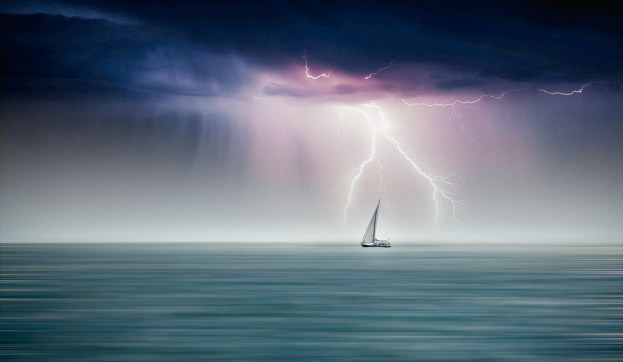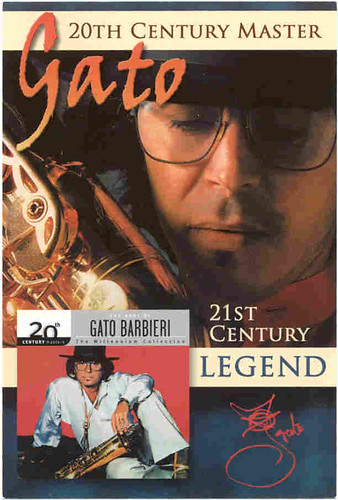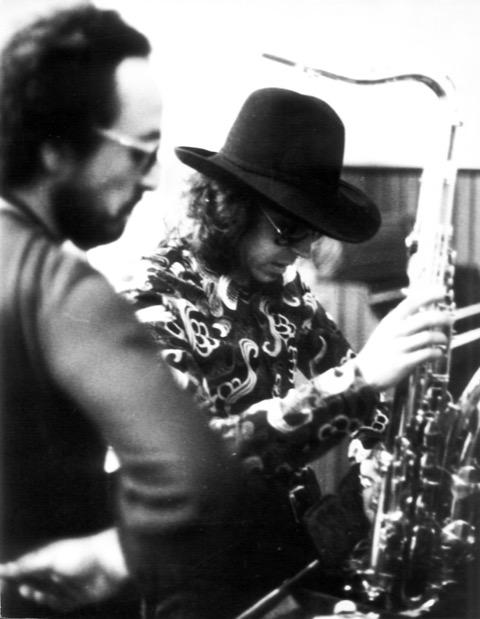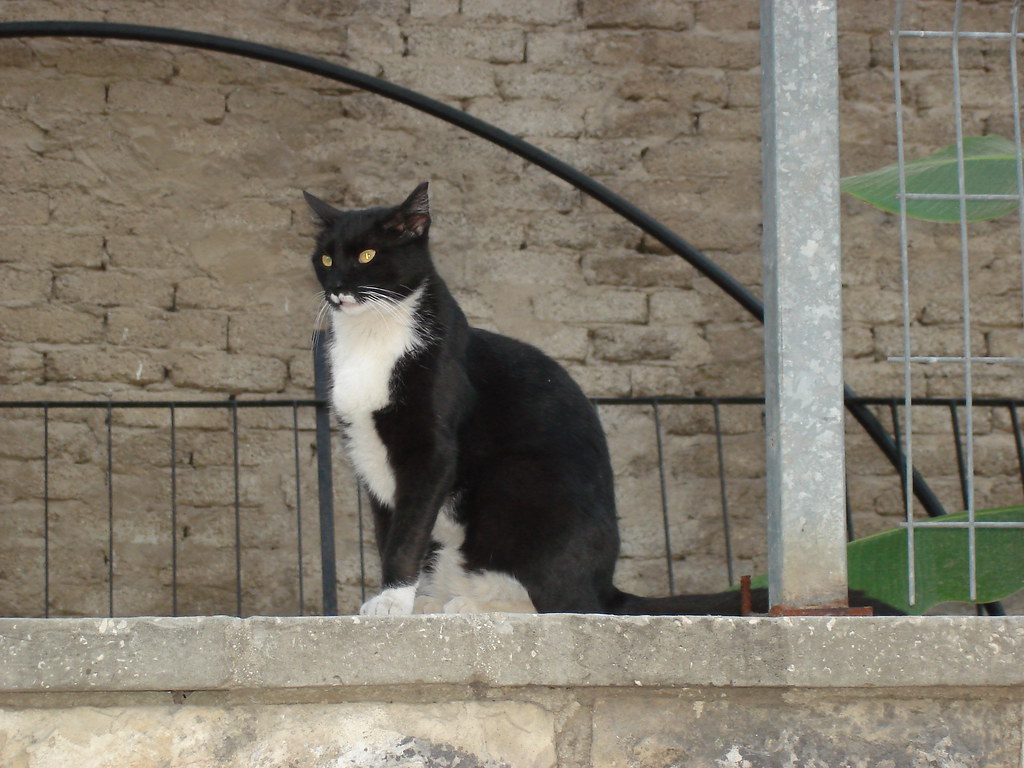
FEATURE image: “Sailing to Cape Cod” by ShaneTaremi is licensed under CC BY-NC-ND 2.0.
Ride Captain Ride was a no. 4 hit in the U.S. and Canada in the spring and summer of 1970. It was written and performed by the Tampa, Florida-based rock band, Blues Image. The song is a fantasy about a captain and crew who, seeking laughter and freedom, take a trip on a mystery ship into an uncharted world.
Co-written by the band’s lead singer and guitarist Mike Pinera (b. 1948) and keyboardist “Skip” Konte (b. 1947), Ride Captain Ride sold over one million copies and was certified Gold in August 1970. Although best known for this song, Blues Image is much more than a one-hit wonder band.
Miami, Florida’s late 1960’s psych-rock music scene
Formed in Tampa in 1966, Blues Image relocated to Miami in 1968. They were key in helping promoters establish a popular new music club in Sunny Isles Beach (in a former bowling alley) called “Thee Image.” It became South Florida’s go-to venue for newly emerging psychedelic rock and it drew huge crowds.
The club featured three stages along with a meditation room and a black-light room. It booked local bands as well as name acts such as Blood, Sweat, & Tears, Cream, The Doors, the Grateful Dead, Led Zeppelin, the Lovin’ Spoonful, and Frank Zappa.
The club was brain-child, construction project, and congregant spot for most of the area’s hippies. The hippies brought love, peace, and sister- and brotherhood to beachfront Miami.
Jam sessions and love ins in the nearby public parks included one incident which involved the Grateful Dead, Blues Image, and about 3,000 impromptu fans. Blues Image also became one of the first rock groups to experiment with Latin-infused rock which exploded onto the wider rock music scene in the 1970s.

The beginning of the end for Miami’s late 1960’s psych-rock music scene was The Doors’ concert appearance there in March 1969. Following the August 1968 Republican National Convention in Miami that nominated and elected Richard Nixon as U.S. president, local public opinion soured on the hippie subculture and Thee Image was shuttered.
That same year, in 1969, Blues Image moved to L.A., signed with Atco Records and released their debut album. Other bands relocated out of Miami – some to New York City. The cultural embers of Thee Image were transplanted to L.A. for a short time in another club – but South Florida’s psych-rock scene that featured rock’s greats had clearly ended.
In the summer of 1969, Blues Image drummer Manny Bertematti and Jimi Hendrix were seen jamming together at L.A.’s “Thee Experience,” the music club on the Sunset Strip evocative of Thee Image. In Melody Maker shortly before his death, Jimi Hendrix observed that Blues Image was “one of the best up and coming bands around.”
Then came April 1970 and Ride Captain Ride, Blues Image’s impromptu hit. Released as the 6th track on the band’s second album, Open, the main guitar solo and fills were provided by Kent Henry with the song’s final guitar solo played by Mike Pinera. Ride Captain Ride became the no.32 ranked single on 1970’s year-end Billboard chart. Since that era, the song has been covered many times, notably by Blood, Sweat, & Tears in 1975 and by Phish from 1987 to 2013.
When Pinera left Blues Image, the group quickly broke up in 1971. Skip Konte joined Three Dog Night. Others, including Pinera, played for memorable rock bands such as Iron Butterfly, Steppenwolf, Crosby, Stills, Nash and Young, Manassas, Jackson Browne, Joe Walsh, Alice Cooper and more.
RIDE CAPTAIN RIDE LYRICS:
Seventy three men sailed up from the San Francisco Bay
Rolled off of their ship, and here’s what they had to say
We’re callin’ everyone to ride along to another shore
We can laugh our lives away and be free once more
But no one heard them callin’, no one came at all
‘Cause they were too busy watchin’ those old raindrops fall
As a storm was blowin’ out on the peaceful sea
Seventy-three men sailin’ off to history
Ride Captain Ride upon your mystery ship
Be amazed at the friends you have here on your trip
Ride Captain Ride upon your mystery ship
On your way to a world that others might have missed
Seventy-three men sailed up from the San Francisco Bay
Got off the ship, and here’s what they had to say
We’re callin’ everyone to ride along to another shore
We can laugh our lives away and be free once more
Ride Captain Ride upon your mystery ship
Be amazed at the friends you have here on your trip
Ride Captain Ride upon your mystery ship
On your way to a world that others might have missed
Ride Captain Ride upon your mystery ship
Be amazed at the friends you have here on your trip

Following Blues Image’s demise, in the summer of 1972, the Beach Boys—Al Jardine, Dennis Wilson, Brian Wilson, Carl Wilson, and Mike Love—decided to relocate themselves and their families to the Netherlands to record.
Once there they couldn’t find an adequate recording studio for their plans. Artistic integrity demanding it and money being no object, they imported a studio that was constructed to their specifications in a converted Dutch barn. Throughout the rest of that summer 1972, the Beach Boys, formed in 1961, recorded their 19th album entitled aptly Holland.
Producer Warner Bros. assessing that the new album lacked what they believed could be a hit single started fishing around for a possible hit song to replace another song on the album. Without a definable hit, Holland, the Beach Boys were told, was not releasable.
Brian Wilson and Van Dyke Parks, a collaborator on Good Vibrations and head of Warner Bros.’ new music video department in 1972, came up with Sail On, Sailor.
“I sailed an ocean, unsettled ocean Through restful waters and deep commotion Often frightened, unenlightened Sail on, sail on sailor, “ is the opening line. A sailing song for sure with deeper connotations of a searching journey with ups and downs which could be personal or professional.
The first-person narrator expounds on the individual and universal nature of the sail: “I wrest the waters, fight Neptune’s waters Sail through the sorrows of life’s marauders Unrepenting, often empty Sail on, sail on sailor.”
The music was remembered to have been drafted by Wilson in 1970 and, with Van Dyck Parks, into a fuller form in 1971. The song was then headed to Three Dog Night and had lyrics written by Ray Kennedy and Tandyn Almer.
Hearing the upbeat tune with its rich harmonies and delving backbeat as finally released, it can be easy to miss the tangle of the sailor’s story: “Seldom stumble, never crumble Try to tumble, life’s a rumble Feel the stinging I’ve been given Never ending, unrelenting Heartbreak searing, always fearing Never caring, persevering Sail on, sail on, sailor.”
In 1972, the Beach Boys’ manager Jack Rieley returned to L.A. and gave the song’s lyrics a going over. He was particularly fond of the line: ”lost like a sewer rat alone but I sail…” Officially, Sail on, Sailor listed Wilson, Almer, and Parks as its composers and Rieley and Kennedy as the lyricists. South African singer Blondie Chaplin, who had been working with the Beach Boys since 1971, became its lead vocal.

By year’s end – it was November 28, 1972 – Brian Wilson was effectively banned from Village Recorders in L.A. Some thought he had been tinkering too much with Sail On, Sailor. Younger brother Carl Wilson was put in charge. During the hit song’s extended and close collaboration, a strong dose of these artists’ struggles is readily displayed in its words: “Always needing, even bleeding Never feeding all my feelings Damn the thunder, must I blunder There’s no wonder all I’m under Stop the crying and the lying And the sighing and my dying.”

Sail On, Sailor was released in February 1973 as the album Holland’s lead single. It peaked at no.79 on the Billboard Hot 100. When it was re-released as a single two years later, in 1975, it jumped to no.49. The album, also a critical success, peaked at no.36 on the Billboard 200 Albums chart and in the top 20 albums in the UK.
Sail On, Sailor has been covered many times, including recently by Los Lobos on their 2022 Grammy-Award winning Native Sons album.
SAIL ON, SAILOR LYRICS:
I sailed an ocean, unsettled ocean Through restful waters and deep commotion Often frightened, unenlightened Sail on, sail on sailor
I wrest the waters, fight Neptune’s waters Sail through the sorrows of life’s marauders Unrepenting, often empty Sail on, sail on sailor
Caught like a sewer rat alone but I sail Bought like a crust of bread, but oh do I wail
Seldom stumble, never crumble Try to tumble, life’s a rumble Feel the stinging I’ve been given Never ending, unrelenting Heartbreak searing, always fearing Never caring, persevering Sail on, sail on, sailor
I work the seaways, the gale-swept seaways Past shipwrecked daughters of wicked waters Uninspired, drenched and tired Wail on, wail on, sailor
Always needing, even bleeding Never feeding all my feelings Damn the thunder, must I blunder There’s no wonder all I’m under Stop the crying and the lying And the sighing and my dying
Sail on, sail on sailor Sail on, sail on sailor Sail on, sail on sailor Sail on, sail on sailor Sail on, sail on sailor Sail on, sail on sailor Sail on, sail on sailor
Rock ‘n roll has long shared a tuneful affinity with the seagoing life. Top rock artists followed Blues Image and the Beach Boys in their songs exploring sailing, sailors, and ships and, by turn, venturing into fantastic or rough waters.
There’s the Grateful Dead’s Lost Sailor (1980), Rod Stewart’s and Christopher Cross’s like-titled Sailing (1975 and 1980, respectively), and Crosby Stills & Nash’s Southern Cross (1981). In 1970 Van Morrison put out Into the Mystic and before that there’s Sloop John B, another Beach Boys’ performance from 1966.
Brian Wilson had adapted an actual Bahamian sea chanty for their rock version. Lyrics include “hoist[ing] up the [main] sail” and setting it. In the 21st century these classic songs still resonate on the lists of the “greatest songs of all time.”










